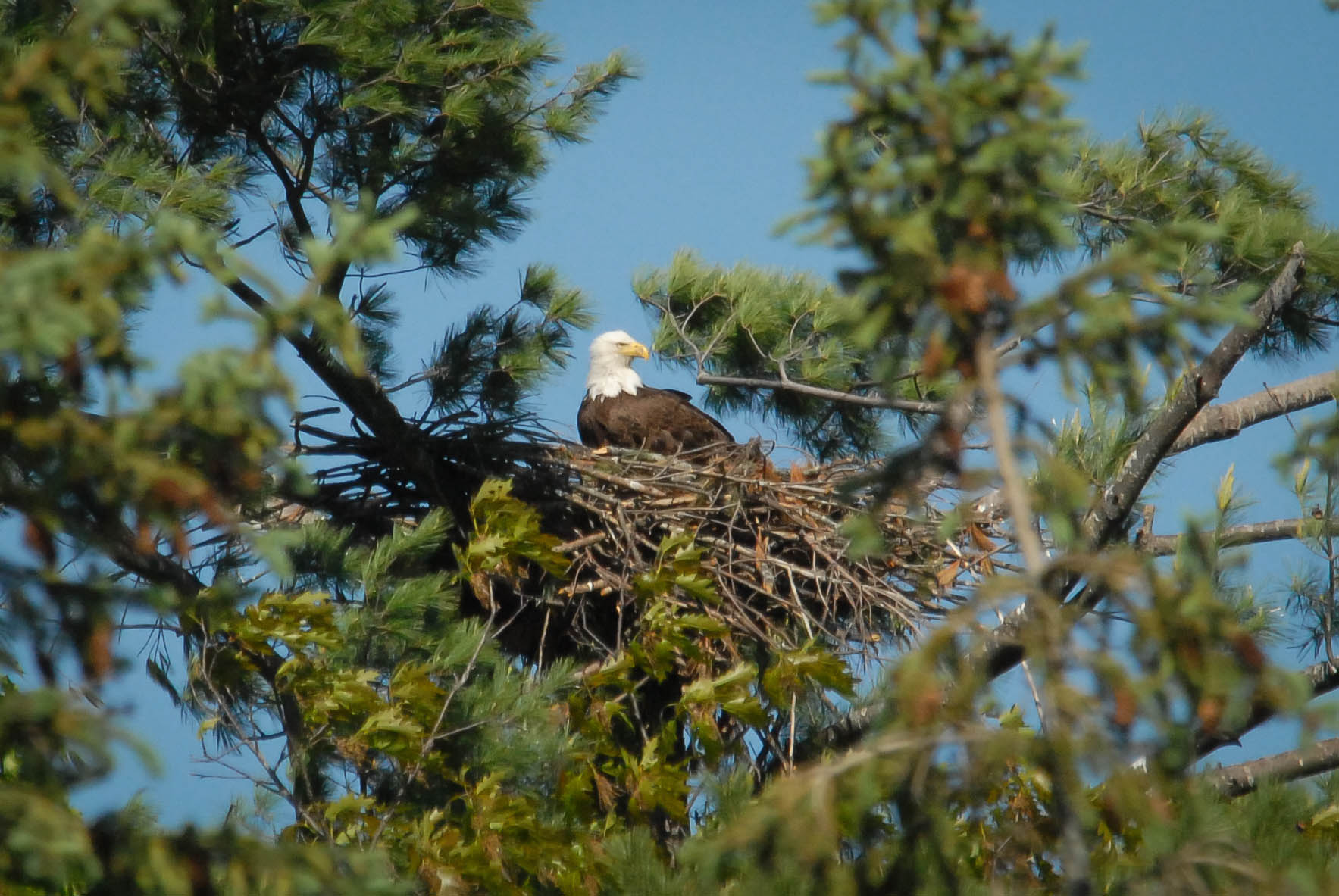
As bald eagle nests become more common in Vermont, the Fish & Wildlife Department is asking bird-watchers to enjoy the birds from a safe distance to avoid disturbing them.
Photo by John Hall, Vermont Fish & Wildlife Department.
The Vermont Fish & Wildlife Department is asking bird-watchers to give nesting bald eagles a hand this spring by enjoying them from a safe distance.
Bald eagles are slowly recovering in Vermont after being absent in the state for decades. Their nests are mostly found along the Connecticut River and the surrounding waterways, although some bald eagle pairs have begun nesting in other parts of the state.
“Nesting bald eagles need their privacy,” said John Buck, migratory bird biologist for the Fish & Wildlife Department. “This is a very crucial time of year for the birds. Most bald eagle pairs are now incubating eggs or may even be tending to newly hatched eagle chicks.”
According to Buck, eagles are very sensitive to disturbance from humans. Activity too close to their nest can result in them abandoning their young. Without a source of food and protection the young eagles will not survive.
Buck recommends that people view eagles with a good spotting scope or binoculars from a distance of at least 300 feet, or roughly the length of a football field.
“Where possible, bird-watchers should try to conceal themselves behind trees and bushes,” added Buck. “If the eagles change their behavior, birders should leave the area.”
Harassing nesting bald eagles not only harms the birds, but is also illegal and a violation of the state endangered species statute.
“Bald eagles invoke a sense of wonder in the natural world and viewers understandably want to get close,” said Buck. “However, as with many nesting birds, eagles need room to rear their chicks. Armed with a pair of binoculars–and from a considerate distance–birders can share in the return of these majestic birds and help ensure their continued survival in Vermont.”
